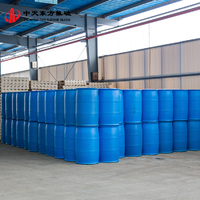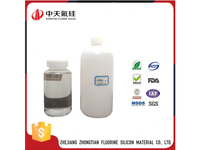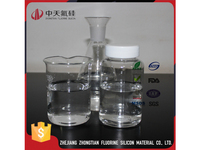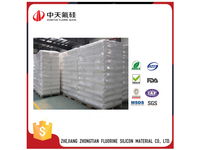Hexamethylcyclotrisiloxane (D3)
Product Quick Detail
- Minimum Order
- 1
- Place Of Origin
- Quzhou, Zhejiang,China
- Packaging
- N/A
- Delivery
- 10 days after receiving the prepayment
Specifications
Product Name: Hexamethylcyclotrisiloxane
Molecular Formula: [(CH3 ) 2 SiO]3
Molecular Weight: 222.47
CAS No.: 541-05-9
UN No.: 1325
Physical and Chemical Properties:
Melting Point: 64℃ Boiling Point:134℃
Relative Density (water=1): 1.12
Appearance: White crystalline lens.
Technical Data of Zhongtian Hexamethylcyclotrisiloxane
Item Index
Content of Hexamethylcyclotrisiloxane/% ≥85
Content of Chloridion/(mg/Kg) ≤30
Hexamethylcyclotrisiloxane Uses and Properties
White crystalline lens,the odor likes grass. Caution! May cause eye and skin irritation. May cause respiratory and digestive tract irritation. May cause central nervous system depression. Moisture
sensitive. It is used for the production of general silicone polymers and specific organic silicon compounds, such as surface treatment agent, coupling agent, crosslinking agent, and so on.
Please be very careful when dealing with hexamethylcyclotrisiloxane, dimethylcyclosiloxane as well as other chemicals.
Package, Storage and Handling of Hexamethylcyclotrisiloxane
Steel drum, net weight190kg/drum. The package should seal up completely, keep in a cold, dry, and ventilating place. Be careful when loading and unloading to avoid damages to the package. During
transporting, protect against damp, water, acid, and alkali.
Chemical Stability: Stable in closed containers under specified storage and handling conditions.
Conditions to Avoid: Incompatible materials, any sources of ignition or heat, exposure to moist air or water.
Incompatibilities with Other Materials: Strong oxidizing agents.
Hazardous Decomposition Products: In the case of a fire, oxides of carbon, hydrocarbons, silicon oxide, fumes, and smoke may be generated by thermal decomposition or combustion.
Hazardous Polymerization: Will not occur.
Operation process of Hexamethylcyclotrisiloxane
1. Blending ratio: hexamethylcyclotrisiloxane: compounding rubber = 1:1 (mass ratio) and mix evenly to get the shrinkage agent.
2. Vulcanization: add the mixed water shrinker into the silicone rubber and mix it evenly according to the required amount, and after a period of vulcanization, then vulcanize for 2 times by 180
degrees Celsius for one hour.
- Country: China (Mainland)
- Founded Year: 2006
- Address: No.20 Huayin North Road, High-tech Industrial Park, Quzhou, Zhejiang,China
- Contact: Doris Cheng








